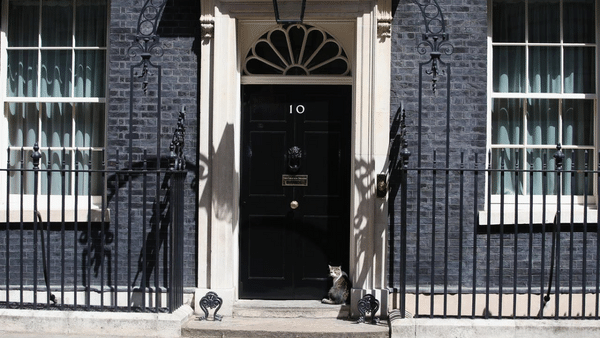The political equivalent of football’s transfer deadline day, David Cameron’s cabinet reshuffle at the start of the new season excited political anoraks everywhere, even those who admitted they should know better by now than to expect substantive political change arising from minor cast adjustments. The age of twitter has only served to enhance the inherent tacky glamour of the day, politicians followed in cars and hounded for information like third rate celebrities on a catwalk by a succession of scrap hungry journalists, determined to out scoop each other.
But they retain an appeal and a resonance with the public, perhaps because we can identify  with the base concept of there being winners and losers, perhaps because we like to take joy in the misery of the departing minister being sacked when so many of us are so unsecure in our own labour markets. We also like to stoke our own indignation – politicians are so unpopular it is barely conceivable that there was a single combination of changes in personnel Cameron could have made that would have elicited a positive response.
with the base concept of there being winners and losers, perhaps because we like to take joy in the misery of the departing minister being sacked when so many of us are so unsecure in our own labour markets. We also like to stoke our own indignation – politicians are so unpopular it is barely conceivable that there was a single combination of changes in personnel Cameron could have made that would have elicited a positive response.
On the flip side of this, its startling to see just how much the media and opposition romanticises those who have been moved on – Kenneth Clarke is suddenly revered as a great liberal statesman, Cheryl Gillian, Sayeeda Warsi, and Justine Greening are suddenly profiled as poor vulnerable women tossed aside by the patriarchal and overwhelming white male cabal at the heart of the cabinet.
Labour initially tried to market the changes as a ‘lurch to the right’ but settled on calling it a ‘no change reshuffle’ as the biggest news of the day were the moves that didn’t happen – Iain Duncan Smith reportedly refused a move to Justice from the Department of Work and Pensions, and George Osborne was of course retained as Chancellor – despite fervent and futile media hype. These were the moves that would have made a lasting impression on the British public – not whether Chris Grayling will take a harder line towards the European Court of Human Rights than Ken Clarke did on prisoners rights. So the reshuffle was portrayed as the ‘same old faces’ on the front bench, as stagnation.
Inadvertently Labour may have been right that the reshuffle changed little – but not for the reasons they have suggested. It seems to have been temporarily forgotten that we have a coalition government in Britain, meaning that the distribution and execution of power across Government departments does not only lie with the political leanings of the Cabinet minister or even of the governing party or Prime Minister. It also relies on the political malleability of the Liberal Democrats who often have a counterbalancing effect on the Conservatives.
There is a Liberal Democrat junior minister in almost every department across government who have a ‘watchdog’ brief to make sure that policy that passes through their department is suitably coalition friendly. To this end, the one area in which this cabinet reshuffle may have actually had an impact that we may be able to monitor was the removal of Nick Harvey from the Ministry of Defence in order to place Lynne Featherstone in the Department for International Development; a move that many have suggested has taken place so that the Liberal Democrats can maximise their visibility in government with policies that they want to be associated with.
However, the overall constraining factor for both parties is the Programme for Government; the document outlining the result of coalition negotiations between the parties and setting out a legislative agenda in a way that no single-party majority government has ever done. Both parties have explicitly ruled out the possibility of a ‘Coalition 2.0’ arrangement where a new set of policies are negotiated, and David Cameron’s pronouncement that a third runway at Heathrow is off the table in the current political cycle reinforces the idea that the Programme for Government will remain the guiding bible for the coalition.
While those promoted may be more palatable to the Conservative right, this Government’s policies are still driven through the ‘Quad’ of David Cameron, George Osborne, Nick Clegg, and Danny Alexander, and there has been no change in the ratio between Liberal Democrat and Conservative MPs that would facilitate any ideological tilt in one direction or another.
Related articles
-
Design for Life: six perspectives towards a life-centric mindset
Joanna Choukeir Roberta Iley
Joanna Choukeir and Roberta Iley present the six Design for Life perspectives that define the life-centric approach to our mission-led work.
-
Inventing meaning and purpose: a politics award for our times
Ruth Hannan
Ruth Hannah is inspiring you to submit your creative and courageous political project to the Innovation in Politics Awards 2022.
-
How can we cultivate healthier and happier communities?
Ella Firebrace Riley Thorold
How might we look to our futures and shape what it means to lead healthier and happier lives?



Be the first to write a comment
Comments
Please login to post a comment or reply
Don't have an account? Click here to register.